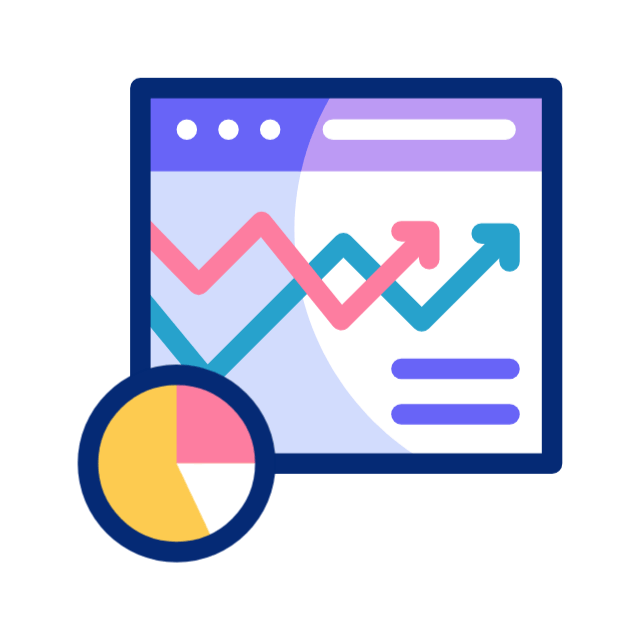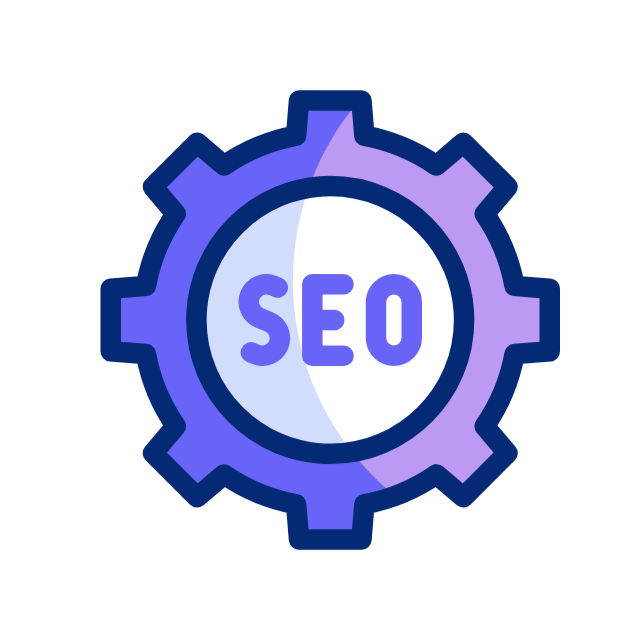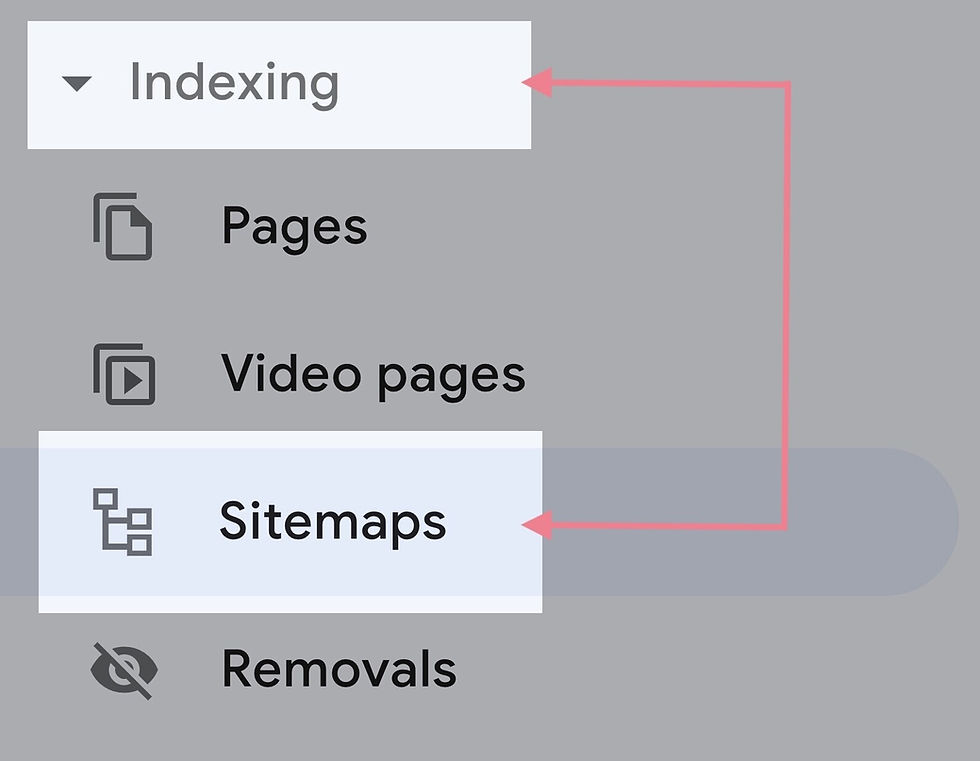
What is Technical SEO? Basic Information and Implementation Tips

Increase the relevance of your website and get it indexed

Identifying and correcting technical and structural errors

Improving your site's visibility and connectivity with Google
About Blakfy
You can contact our team 24/7
_gif.gif)
SEO Strategy
Consultancy
We create effective SEO plans tailored to your site's goals. We begin with competitor analysis and keyword selection, then create a growth roadmap.

Technical SEO
Review
We thoroughly analyze technical details, from site speed and mobile compatibility to structured data verification. We identify and resolve issues.

Content and Backlinks
Analysis
We evaluate your existing content and optimize it for search engines. We increase your authority with the right backlink strategy.

URL Migration and
Migration Management
We professionally manage URL redirects and configuration processes to ensure you don't lose SEO during large-scale site moves.
One of the three main pillars of SEO is Technical SEO audits, which primarily include the following topics:
-
Crawling
-
Indexing
-
Site Architecture
-
URL Structure
-
Mobile Friendliness
-
Site Speed
-
Sitemap
-
Robots.txt File
-
HTTPS
-
Canonical URL
These are the main topics that make up a Technical SEO audit. Let’s take a closer look at each of them.
1. Crawling
Search engines—especially Google—crawl websites, add them to their index, and then rank them based on certain factors. Pages that achieve rankings become accessible to users and start generating traffic. In short, for your target audience to reach you, your website must be crawlable by search engines.
By sending various signals to search engines, you can make your important pages more crawlable while blocking unimportant or private pages you don’t want users to see. Search engines allocate a unique crawl budget for each website. Using this budget effectively allows you to reach a wider audience.
Robots.txt
One of the most important files that helps improve crawlability performance is the Robots.txt file. Search engines use bots with special algorithms to crawl websites. With a Robots.txt file, you can send signals to these bots to:
-
Make your site crawlable
-
Specify the important pages you want crawled
-
Block pages you don’t want indexed
Search engines will still crawl sites without a Robots.txt file, but having one helps them understand your site better and crawl it more efficiently.
2. Indexing
After successfully crawling a website, search engine bots store each page in their index. Indexing is like a filing system where all crawled pages are stored in a database, ranked based on various factors, and then displayed to users. Just as crawlability is crucial, indexability is equally important for your pages to generate traffic and reach your target audience.
Sitemap
A sitemap is a file that contains all the pages on your site. For search engines, it acts as a roadmap. You can categorize pages by type, assign priority levels, and specify crawl frequency.
Even without a sitemap, a website can be crawled. However, search engines may overlook some important pages during crawling and fail to index them. This is why sitemaps are important for crawlability. You can also remove unimportant pages from your sitemap to send signals to search engines.
Canonical Tags
Canonical tags allow us to indicate the standard version of a webpage to search engines. Many websites—especially e-commerce sites—may have pages with similar structures or content. When Google encounters many such pages, it may automatically choose one as the standard, which could harm important pages. Therefore, setting canonical tags manually is important.
3. Site Architecture
Your website’s architecture should be understandable to search engines and offer a high level of user experience. A website with a hierarchical structure can be easily navigated by both users and search engines. In an effective site architecture, click depth should not exceed 3 clicks—meaning a visitor should be able to reach the final page from the homepage within three clicks.
Breadcrumbs
Breadcrumbs, usually located just below the navigation bar, help users understand which page they are on. They also help search engines better understand your site’s structure. Google frequently recommends using breadcrumbs.
4. URL Structure
One of the most important aspects of a Technical SEO audit is the URL structure—specifically how it looks. Users should be able to get an idea of the page content simply by looking at the URL. For an effective URL structure:
For an effec
-
Use s
-
Include yo
-
Avoid unnecessary parameters or session IDs
-
Use hyphens (-) instead_) to_
-
Keep all let
-
Avoid using special ch
-
Ensure URLs are un
-
Maintain a consis
A clean and descriptive URL not only improves user experience but also helps search engines better under
5.
With the majority of searches now coming from mobile devices, mobile friendliness is a critical ranking factor. Search engines, especially Google, use mobile-first indexing—meaning they primarily use the mobile version of your site for indexing and ranking.
To ensure
-
Use respo
-
Av
-
Ensure text is readabl
-
Make clickable elem
-
Test your site with Google’s Mobile-Friendly Test tool
6. Site Speed
Page speed directly impacts both user experience and search rankings. A slow-loading website increases bounce rates and decreases conversions.
Ways to improve site speed include:
-
Compressing images without losing quality
-
Enabling browser caching
-
Using a Content Delivery Network (CDN)
-
Minifying CSS, JavaScript, and HTML files
-
Reducing server response time
-
Eliminating render-blocking resources
7. HTTPS
Security is a major concern for both users and search engines. Using HTTPS ensures the data exchanged between the website and the visitor is encrypted. Google treats HTTPS as a ranking signal, and browsers may mark non-HTTPS sites as “Not Secure.”
To implement HTTPS:
-
Obtain and install an SSL/TLS certificate
-
Update all internal links to HTTPS versions
-
Set up 301 redirects from HTTP to HTTPS
-
Update sitemap and robots.txt with HTTPS URLs
8. Canonical URL
A canonical URL tells search engines the preferred version of a page when there are multiple URLs with similar or identical content. This helps avoid duplicate content issues and ensures that link equity is consolidated to the correct page.
Best practices for canonical URLs:
-
Add a <link rel="canonical" href="URL"> tag in the <head> section
-
Use self-referencing canonical tags on every page
-
Avoid conflicting canonical signals (e.g., different canonical tags across versions)
-
Ensure canonical URLs point to the preferred indexable version of the page
✅ Conclusion:
Technical SEO audits are the foundation of a strong search engine presence. By ensuring proper crawling, indexing, and a well-structured website architecture, you not only help search engines understand your site better but also deliver a seamless user experience. Consistently optimizing these technical aspects will improve your rankings, organic traffic, and overall online visibility.

What is Technical SEO?
Technical SEO is the arrangements made to ensure that Google and other search engines can easily find and understand your site.
It also ensures that the site is fast, smooth and mobile-friendly for visitors.
If you do it right, your site will be more visible in search results.
In this article, you will learn the basics and best practices of technical SEO.
Let's get started!

What is Scanning and How to Improve It?
Crawling is the process by which Google discovers pages on your site.
Google finds new content by following the links on your pages.
A well-structured site makes browsing easier and faster.
Crawling occurs when search engines follow links from pages they know to find pages they haven't seen before.
For example, every time we publish new blog posts, we add them to our main blog page.
So, the next time a search engine like Google crawls our blog page, it will see links where new blog posts have been added.
And this is one of the ways Google discovers our new blog posts.
There are several ways to ensure your pages are accessible to search engines:
Build SEO-Friendly Site Architecture
Site architecture is how pages are linked together.
Good structure ensures that search engines and users find your pages quickly.
Make sure that all pages are no more than 2-3 clicks away from the homepage.
In the site structure above, all pages are arranged in a logical hierarchy.
The home page links to category pages. And category pages link to individual subpages on the site.
This structure also reduces the number of orphan pages.
Orphan pages are pages that have no internal links pointing to them, making it difficult (or sometimes impossible) for crawlers and users to find them.
If you are a SEMrush user, you can easily find out if there are orphan pages on your site.
Create a project in the Site Audit tool and scan your website.
Once the scan is complete, go to the “Issues” tab and search for “orphan.”

Submit Sitemap to Google
An XML sitemap is a list of important pages on your site.
It makes it easier for Google to find your pages.
Be sure to use it, especially if you have many pages or if the pages are loosely connected to each other.
Here is what a sample SEMrush sitemap looks like:
Your sitemap is typically located at one of two URLs:
yoursite.com/sitemap.xml
yoursite.com/sitemap_index.xml
Once you find your sitemap, submit it to Google via Google Search Console (GSC).

Your sitemap is typically located at one of two URLs:
yoursite.com/sitemap.xml
yoursite.com/sitemap_index.xml
Once you find your sitemap, submit it to Google via Google Search Console (GSC).
Go to GSC and click on “Indexing” > “Sitemaps” from the sidebar.

Then paste your sitemap URL in the blank field and click the "Submit" button.

Use Redirects Correctly
It's important to use redirects when migrating your old pages to new ones. The most reliable method is a 301 redirect, which means a permanent move and has a positive SEO impact. However, redirect chains (where one page redirects to another, which redirects to another) and loops (where redirects are interconnected) slow down your site speed and prevent search engines from crawling your page properly. Avoid these.Keep Your URL Structure Simple
URLs should be short, clear, and descriptive. Complex parameters, unnecessary length, and meaningless characters negatively impact SEO performance. For example, clean, to-the-point URLs like site.com/technical-seo-basics are preferred. Conversely, avoid complex URLs like site.com/page?id=123&ref=abc.Use 404 and 410 Codes for Error Pages
It's important to provide the correct error codes for pages that no longer exist on your site. A 404 indicates the page was not found, while a 410 indicates the page has been permanently removed. A 410 code allows search engines to remove the page from their index more quickly, keeping search results up-to-date and preventing users from encountering broken pages.
